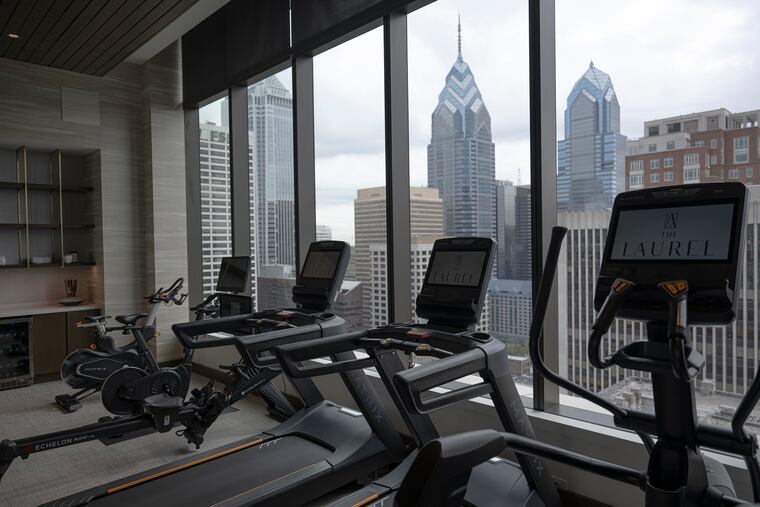Meet the guy who negotiated with developers on Center City’s behalf (and once won a Tony)
When developers came calling, Richard Gross put his career as a lawyer and public servant to use as head of the Center City Residents Association.

The Center City Residents Association (CCRA) is a community organization like no other. Covering much of downtown Philadelphia to the west of Broad Street and South of John F. Kennedy Boulevard, it represents some of the city’s most iconic locales.
In recent years, Richard Gross has been synonymous with CCRA. A relatively recent Philadelphia resident — he moved to town 12 years ago from Washington, D.C. — he put his career as a lawyer and public servant to use negotiating with big developers who had their eyes on the neighborhood.
Gross is (probably) the only community group leader with a Tony Award, won for producing a revival of Who’s Afraid of Virginia Woolf? on Broadway. He also served as a legal aid lawyer in Boston, ran the Consumer Product Safety Commission under Jimmy Carter’s administration, and orchestrated big real estate deals in the District of Columbia.
Gross and his wife, Bobby, recently moved to Santa Barbara, Calif., to be closer to their children and grandchildren. Before he left town, Gross talked with The Inquirer about development in Center City and how the city’s Registered Community Organization (RCO) policy needs to change.
How did you get involved in CCRA?
In 2012, [Philadelphia developer] Pearl Properties wanted to build the [equivalent of the] Empire State Building on the corner where we live, 19th and Chestnut.
They wanted a zoning change, and I couldn’t understand why anybody should give them a break to overbuild. So [at a community meeting] I introduced myself to Pearl and said, “I’d like to talk to you about the right building. I don’t want to go to court, but I think there is a way to get this done.”
Finally after three losses on their part, they came back to me. We hired [Philadelphia architect] Cecil Baker. We paid half and they paid half, and he designed the right building. And it ended up being the Harper, which is a home run. It’s one of their best buildings.
How has Center City changed over the course of your time here?
When we came here, it felt like the sixth borough of New York, only cheaper. Great restaurants, great spaces, great culture, and a wonderful community.
COVID wiped some of that out. People didn’t interact as well. People didn’t go to restaurants. People stayed away from culture. Street behavior got worse. There was an influx of homeless and drug-addicted people. Center City took a hit.
We’re just now seeing a full recovery, although we’re not seeing a full retail recovery yet, not withstanding what CCD says. We see too many vacancies on Walnut and Chestnut. But I’ve been really happy to participate in the process of building back with better retail and the restaurant scene.
What accomplishments are you most proud of during your time at CCRA?
I’m particularly proud of the community benefits agreements we have. They’re all on our website. Each major building since I started has come to agree with CCRA on the design, the presence on the street, the minimum disruptions during construction, and a sensitivity to loading and traffic in a very congested neighborhood. I am very proud that we’ve welcomed a ton of new space.
My experience with Pearl told me that we could get developers to do the right thing for the neighborhood and still make enough money. I think we’ve established a culture. It’s not aggressive. It’s not litigation. It’s a culture of “let’s cooperate to find the best buildings for the neighborhood.”
The Laurel is a good example of that. That was originally supposed to be 54 stories of shear glass. It was wrong for Rittenhouse Square. I reached out to Tim Downey, the president of Southern Land Co., and the two-year process resulted in the redesign of the Laurel, which is a much better building and much more handsome. And it’s only 48 stories.
In the last election, voters approved a ballot measure to require city government-backed insurance policies for RCOs like yours. But the laws governing them are very weak, and opponents of the measure fear taxpayers will get stuck with the bill for bad neighborhood group behavior. Most RCOs aren’t as sophisticated or resource-rich as CCRA.
There aren’t a lot of 30-story buildings being built in Kensington or in South Philadelphia, so we have to be prepared to handle issues that most RCOs don’t face. For that reason we have a professional staff person. We have access to architects and engineers, many of them live in the neighborhood.
Some of the smaller RCOs are problematic, and we need professionalism there. I’m hopeful that the planning department will improve the RCO performance because it is a little uneven throughout the city.
But do I think RCOs should get protection? Yes. We [CCRA] buy insurance ourselves, but many of them can’t afford it. I think along with that protection, there need to be standards that our RCOs hew to in order to take advantage of the insurance. It’s an important municipal function, but there needs to be some supervision.